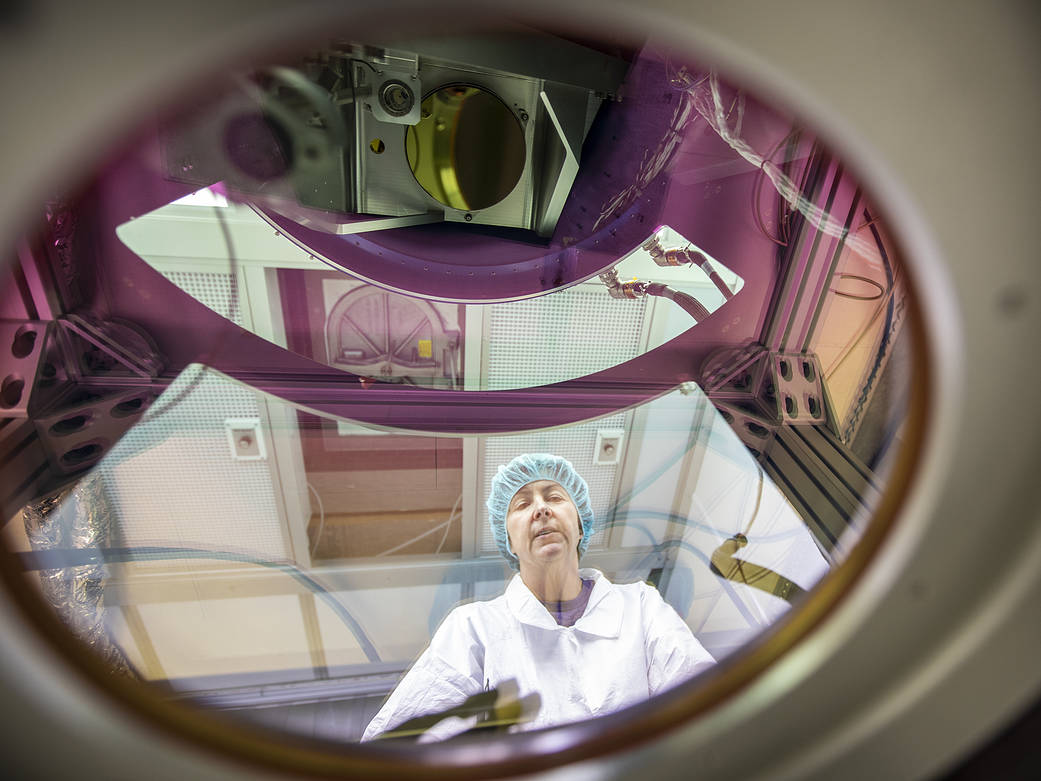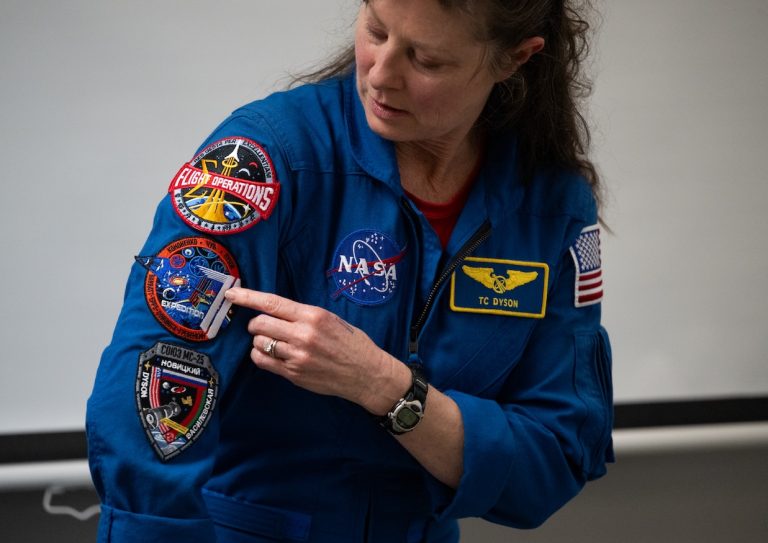电子技术人员安娜·诺伊对多普勒气溶胶激光雷达(黎明)进行最后的检查,然后开始为即将到来的航空科学运动进行越野公路旅行。Noe从仪器的下方透过出口光学窗口拍摄。“黎明号”由美国宇航局位于弗吉尼亚州汉普顿的兰利研究中心研发,利用激光脉冲对矢量风速和风向进行高度精确的测量。在即将到来的活动中,科学家们将利用“黎明”号验证由欧洲航天局(ESA)的一颗名为“Aeolus”的大气动力学任务(ADM-Aeolus)卫星进行的测量。该卫星将测量全球的风速。ADM-Aeolus于2018年8月发射。研究人员认为来自卫星的数据将有助于提高天气预报的准确性。阿姆斯特朗DC-8飞行实验室的验证飞行将于4月15日开始。兰利大学的科学家迈克尔·卡瓦亚是“黎明”号的首席研究员。兰利大气科学家Kristopher Bedka是此次飞行任务的负责人。
Electronics technician Anna Noe makes final checks to the Doppler Aerosol Wind Lidar (DAWN) before it begins a cross-country road trip for use in an upcoming airborne science campaign. Noe is pictured here from the underside of the instrument looking through the exit optical window. Developed at NASA’s Langley Research Center in Hampton, Virginia, DAWN uses laser pulses to take highly accurate measurements of vector wind speed and direction. In the upcoming campaign, which will be based out of NASA’s Armstrong Flight Research Center in Palmdale, California, scientists will use DAWN to validate measurements from Atmospheric Dynamics Mission Aeolus (ADM-Aeolus), a European Space Agency (ESA) satellite that profiles wind speeds across the globe. ADM-Aeolus launched in August 2018. Researchers believe data from the satellite will help improve the accuracy of weather forecasts. Validation flights aboard Armstrong’s DC-8 flying laboratory begin April 15. Langley scientist Michael Kavaya is the principal investigator for DAWN. Langley atmospheric scientist Kristopher Bedka is the mission lead for the flight campaign.
Credit: NASA/David C. Bowman







